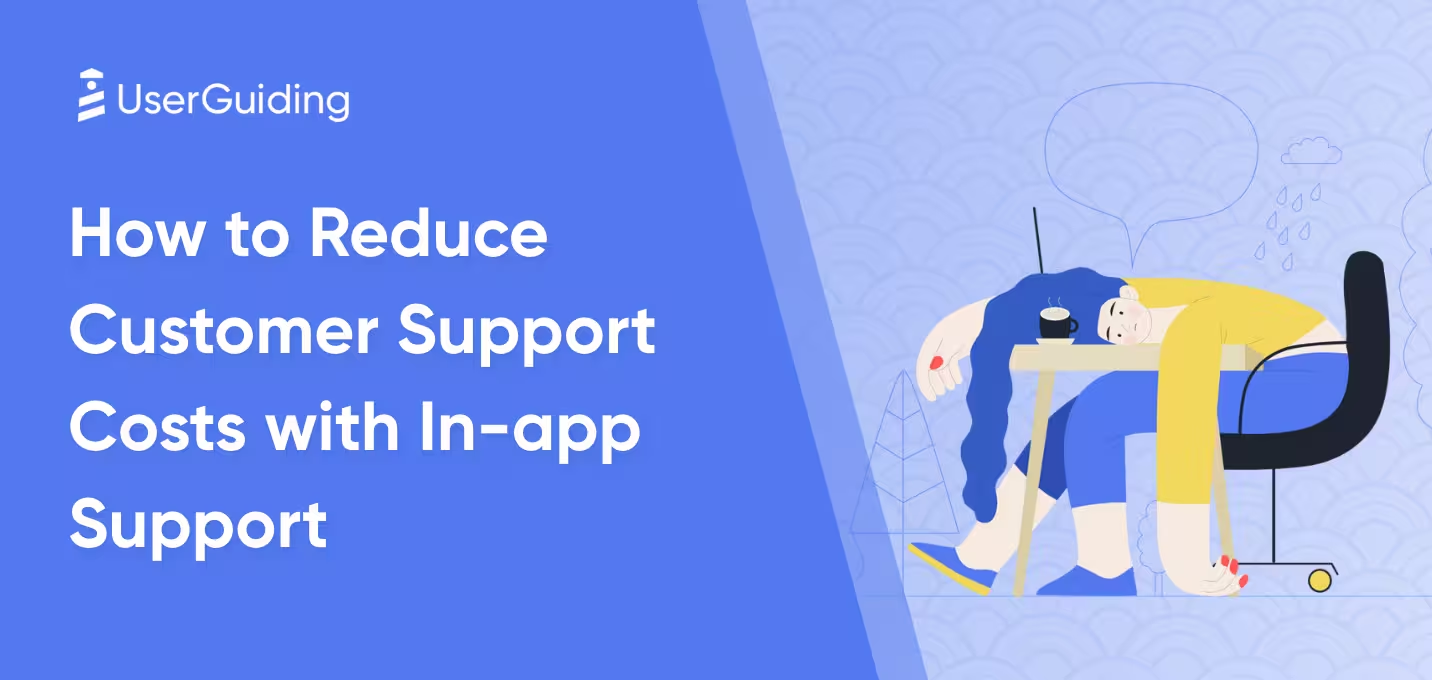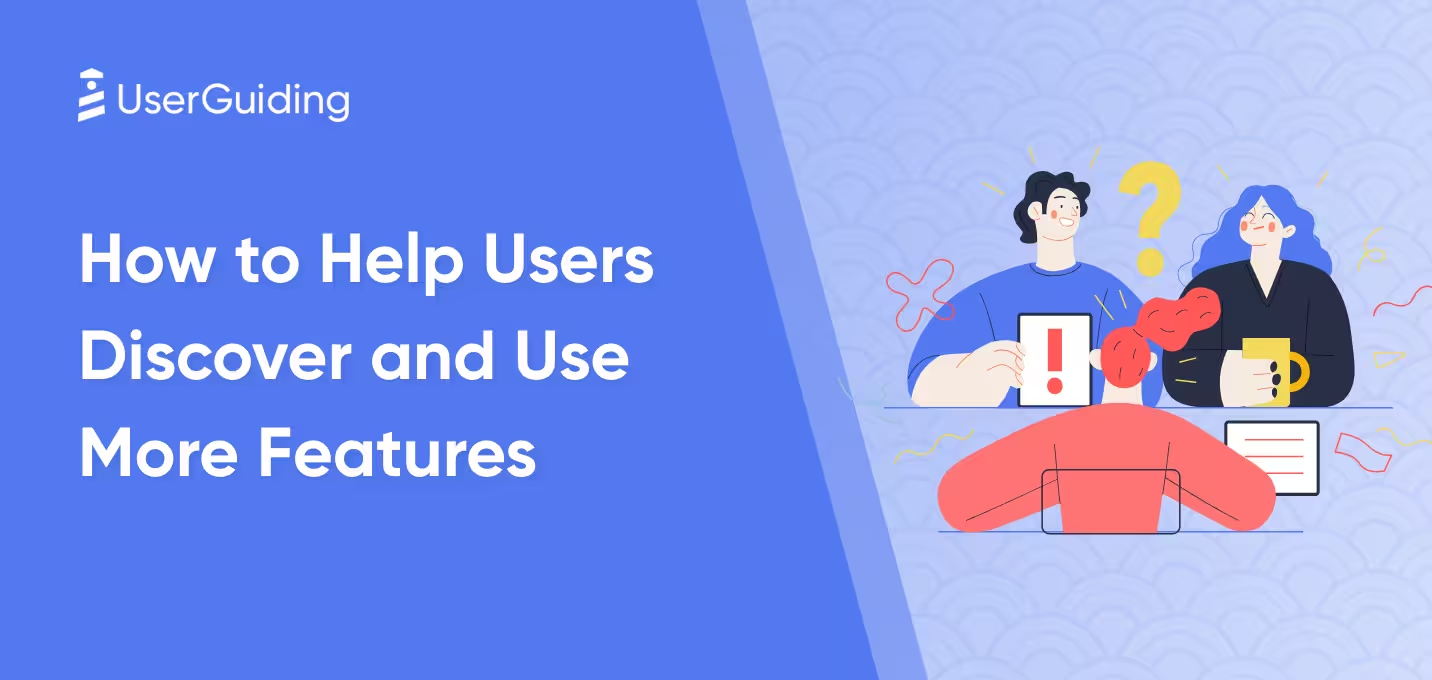

Would you like to get your product adopted by the mass market?
Who wouldn’t, right? That’s why we’re here! 😀
Well, product adoption is a gradual process. It doesn’t happen immediately, and not everyone will adopt your product at the same rate.
Some people are early adopters, while others wait to adopt a new product for as long as they possibly can. I’m reminded of a 40-something cafe owner I met recently who told me that he was strenuously avoiding buying a smartphone!
Would you like to graph out the product adoption curve for your product?
And, perhaps more importantly, would you like to find out how you can speed up the adoption process?
Well, you’re in luck! That’s what we’re here to share with you today.
TL;DR
- The product adoption curve is a graph that shows when different user groups adopt a product over its lifecycle.
- It’s divided into innovators, early adopters, the early majority, the late majority and laggards.
- Each group has different characteristics and expectations, so make sure you speak to each of those separately in your marketing.
- The gap between the early adopters and the early majority is called the Chasm, and it’s a common stumbling block for product teams.
- To overcome the chasm, focus first on dominating one niche market, then expand your niche solution to other segments, making sure to adjust your messaging as you go.
- A digital adoption platform is a great tool to have to boost your adoption rate.
- The best such platform on the market is UserGuiding. Other options include Appcues, WalkMe, Pendo and Userpilot.
What is the Product Adoption Curve?
A user adopts a product when they start using it on a regular basis to solve a problem they have.
“Regular” doesn’t have to mean every day. You can also adopt a product that you use once or twice a year, perhaps for filing taxes.
Users adopt products at different times, for different reasons. For example:
- Someone who adopts something much earlier than the average person might be a product evangelist, or might really connect with the sense of mission behind the product. They might also have a burning desire to have a particular problem solved – and then a product comes along and does exactly that for them!
- In many cases, businesses adopt products for practical reasons of economic self-interest. See a product that can help optimize some aspect of your business? Yep, let’s buy that!
- Sometimes, people adopt products much later than the average person, just out of peer pressure. I actually remember getting my first smartphone 11 years ago at the request of an ex of mine, much later than most of my friends.
The product adoption curve is a model that illustrates when different groups of users adopt a product, based on a product’s journey from total obscurity to mass-market adoption. You can apply it to every product – even yours!
This model was inspired by a theory developed by distinguished professor of communications, Everett M. Rogers, in his classic book, Diffusion of Innovations.
Here’s what the graph looks like:

The Five Stages of the Product Adoption Curve
You can see that the users adopting a product are broken down into several different categories, according to how quick they are to adopt it.
In order from fastest adopters to slowest adopters, the five stages are:
- Innovators: Tech enthusiasts who love experimenting with new ideas
- Early Adopters: Visionaries who embrace technology to gain a competitive advantage
- Early Majority: Pragmatic users who adopt technology after its benefits are proven
- Late Majority: Skeptical users who adopt only when it's mainstream
- Laggards: Resistant users who adopt technology as a last resort
To maximize your adoption rate, it’s very important that your business approaches users in each of these stages differently. That’s because they each have distinct characteristics, and consequently require a distinct approach to marketing.
For example, stressing in your marketing messaging that someone should use a product because all their friends use it would work extremely well in the late majority stage, but terribly when targeting innovators!
Don’t forget that your customers expect this type of personalized messaging. Twilio’s State of Personalization Report in 2021 found that 60% of consumers said they would likely become repeat buyers after a personalized shopping experience, up from 44% in 2017.

It’s very likely that this number has only increased in the years since.
So let’s take a look at each of these five stages in more detail, so that you know how to approach each one of them.
Innovators
The first group of people to try a new product are the innovators, sometimes also known as product evangelists.
These people normally fall into one of two categories:
- They’re extremely open-minded and like trying our new products just for the fun of it, so that they can explore something new and be in the know. People like this are willing to dive in and experiment.
- Alternatively, they have a pressing problem that’s giving them a massive headache, and they’re willing to try just about anything to make that problem go away – even something that’s new and untested.
The two categories aren’t mutually exclusive, so an innovator could technically be someone who’s open-minded AND who has a major problem that’s solved by your product.
Innovators aren’t expecting perfection. Just something that’s good enough – the famous start-up term MVP (Minimal Viable Product) was developed to represent a product that’s good enough for innovators to use.

So if there are still some minor technical problems to work through at this stage, that’s fine.
The best way to find innovators is to go where they already hang out. For example:
- Attend an industry conference that attracts the best minds in the business
- Write an article in a magazine (online or offline) that’s read by innovators in your space
- Find niche online discussion forums where nerds in your space hang out and share abstract ideas
Once you’ve found them, get to know them, listen to how they define the problem you’re solving, and take copious notes.
Your product at this stage should be something that’s fluid and responsive to the feedback you’re getting from innovators. So keep both your marketing and product development lean, iterate quickly, and learn from your (inevitable) mistakes.
Early Adopters
Early adopters are similar to innovators in that they’re still ahead of the rest of the market. This means they’re still open-minded and tolerant of some degree of risk.
That being said, they’re more risk-averse than the innovators. Expect to have to use testimonials to convince early adopters that some innovators are already getting value out of your product.
Early adopters are almost always more similar to the second type of innovator than to the first type. These are people who have a pressing issue, to the point that they’re sometimes willing to pay a premium to solve it – not so much the mad scientist types who are open to trying something new for the sake of doing something new.
As a result, they’re willing to tolerate some technical flaws, but they have higher expectations in terms of having your product deliver on its promised value quickly, as well as a greater need for support.
You can boost your odds of getting early adopters on board by making it extremely easy for them to trial your product for free, and then creating an interactive guide that shows them how a user like them can get value from your product.

Early Majority
Getting the early majority on board is a clear sign that there’s a place for your product in the mass market. It’s also a sign that you’ve achieved some measure of product-market fit.
At this point, congratulations are in order! Most products don’t make it to this stage, but rather perish because they’re unable to cross the chasm. More on how to do that later.
The early majority is the best phase to take advantage of thought leadership in your marketing. Do you have any prominent leaders in your space who use or endorse your product? If so:
- Go on their podcast and talk to them
- Follow them on LinkedIn and share their content
- Quote them in blog articles
- Put a testimonial in their name on your website
Users in the early majority are somewhat easily swayed by the opinions of such thought leaders, so getting them to openly or tacitly endorse what you’re doing is going to be a huge deal for your product.
Late Majority
The late majority adopts a new product out of necessity, not curiosity. Common reasons for adopting at this stage include:
- Everyone else is using this product
- Not wanting to be left out or left behind
- Adopting this product is a necessity for participating in modern life (I’m looking at you, grandma, when you got the internet!)
Sometimes, users at this stage are held back by not wanting to spend money on a new type of product. They know your product exists – but is it really worth spending money and learning how to use it?
Those are the kinds of sales objections you’ll have to overcome to get these types of users on board.
The best recommendation at this stage in terms of marketing is TV ads – or potentially radio, newspaper or Youtube ads, depending on your ICP.
The goal here is to continually remind users in the late majority that your product exists, people like them are using it, and that it’s valuable.
Do this for long enough, and you’ll eventually wear most of them down.
Laggards
Laggards are the last users to adopt your product.
Without a shadow of doubt, they’re the hardest users to get on board. They’re the resident skeptics of the product adoption curve, they’re risk-averse, and they don’t like change in general.
Most products will never get to this stage of the product adoption curve – it’s hard enough to get the first four types of customers to adopt your solution! Consider that the only products that do get this far are ones that have already conquered 84% of the market, as per the product adoption curve.
If you do want to take on the challenge of marketing to laggards, try the following:
- Make them an offer that’s so compelling that they can’t refuse it. Go beyond your main value proposition here – clearly, laggards aren’t sold on this. Also go beyond simply cutting the price – a laggard is less likely to be held back by a high price than someone in the late majority.
- Highlight that the pain of keeping things the same is less than the pain of adopting your product. This might help you overcome their resistance to change.
- Expect your offers to fail most of the time. These are laggards, after all; persuading them is very, very challenging. Make peace with the fact that you’re not going to get everyone to use your product.
What is the Chasm in Product Adoption?
Let’s return to our product adoption curve for a moment:

Note the conspicuous gap between the early adopters and the early majority.
That’s called the “Chasm” – something first highlighted by Geoffrey Moore in his book Crossing the Chasm.
It’s a critical point in all product adoption journeys for two reasons:
- It’s the point where most products fail.
- Crossing the Chasm is the difference between remaining a niche product and gaining mass-market adoption.
Why the Chasm Exists
The Chasm exists because there are fundamental differences between the early adopters and the early majority in terms of how they adopt products.
Early adopters (and innovators, for that matter) are willing to take risks and experiment. They value innovation, fresh thinking, and out-of-the-box solutions.
By contrast, the early majority wants a reliable, proven solution. They’re less interested in experimenting. They want something practical and use-friendly that just works.
This creates a conundrum for businesses that want to cross the Chasm. Marketing strategies that attracted early adopters might not resonate with the early majority, creating a gap in adoption.
The Importance of Crossing the Chasm
And yet, cross the Chasm we must – assuming we want our products to succeed long-term.
The businesses that successfully cross the Chasm are able to scale. They gain traction with the early majority, and with that comes sustained growth and profitability.
Those that aren’t able to cross the Chasm often end up stagnating. Can you sustain a business solely on the basis of a niche audience? Perhaps, but it’s easier said than done.
So why take the risk? Is there a way to maximize your odds of crossing the Chasm?
Strategies to Cross the Chasm
Here are some strategies that you can use as a product manager or product marketer to increase your chances of crossing the Chasm successfully.
Focus on a niche market first
The main advice given in Crossing the Chasm is to focus on solving a specific problem for a niche market before you start looking for traction in the mass market.
This makes sense. Consider that your resources are limited as an early-stage business. If you try to scale before you have a secure enough foothold, you will spread your resources too thinly.
As a consequence, you will probably either burn out and/or run out of money, and be outcompeted by the businesses that focused on one niche market.
As Riya Bhardwaj wrote on LinkedIn:
“Success lies in finding and dominating a niche market before expanding to the broader audience — a strategy as relevant today as when the book was first published.”
Wes Bush, Founder of ProductLed, makes a similar point in his PLG MasterClass, as shown in the following screenshot:

The argument is the same: your company should focus on solving one problem for one niche audience. Offer the best customer support to those people that you possibly can, and even offer additional add-ons for free while you perfect your core value proposition.
Even if your ego thinks you’re capable of more, resist the urge to expand your focus until you’ve well and truly dominated that one market.
Expand beyond the niche
Once your niche solution has been perfected, look for a way that you can leverage that same solution in an adjacent market segment.
By doing this, you’ll set up something called the “bowling pin effect,” which is where success in one market segment cascades into another one.
There’s a great example of the bowling pin effect in Crossing the Chasm that involves Apple.
Back in the day, Apple initially targeted the graphics departments of Fortune 500 companies, and solved the problem of allowing marketing executives to create high-quality presentations.
From there, it expanded into:
- Marketing departments
- Sales departments
- Advertising agencies
- Publishers
All of this expansion was only possible on the back of Apple’s initial success with graphics teams.
Leverage References and Case Studies
As a general rule, the later a user adopts a product on the product adoption curve, the more social proof is needed to persuade them to try it.
So while innovators don’t care at all about the opinions of others, users in both the early and late majorities definitely do.
It follows that you can cross the Chasm by showing early majority users proven success stories from early adopters. There are a number of ways to do this:
You can put quotes on your landing pages in strategic places:

You can create a dedicated section of your website for case studies:

Or you can make a wall of testimonials:

Adjust Messaging and Positioning
The type of language that appeals to innovators and early adopters is completely different from the language used to sell to users in the early majority.
Innovators and early adopters like novelty. They like to think outside the box. So you can use copy like:
- “Be among the first to …”
- “All-new…”
- “Ground-breaking…”
However, none of these words will resonate with users from the early majority onwards. These types want a proven solution that will reliably deliver what they need, so you’ll need to emphasize dependability, scalability and ROI.
For example:
- “Build your business with …”
- “Grow with us.”
- “Get … for every dollar you invest.”
So a key part of being able to jump the Chasm lies in being willing to update your messaging to better suit the part of the market you’re expanding into.
This can be difficult emotionally – especially if you’re attached to your old messaging and you’re used to seeing it bring in the results you want.
Digital Adoption Platforms: A Key Element of Success
So we’ve established that it’s quite difficult to move to the right of the product adoption curve, jump the Chasm and get your product adopted by the mass market.
Are there tools on the market that can make this process easier?
Yes, it turns out that there are!
A Digital Adoption Platform (DAP) is a software tool that helps new users become familiar with a new software product, understand why it’s valuable, and ultimately adopt it as a solution.
Such tools are very often code-free. What this means is that your non-technical product managers can use DAPs to build customer education elements like hotspots and tooltips – without having to mess around with code.
Some DAPs will even let you survey your customers about your product features, create an AI assistant and an in-app resource center to answer FAQs. Speaking of which, our product adoption report found that companies are already using an average of 3 such resource centers.

Why do you need DAPs?
Humans are psychologically wired to be resistant to change. Very often, the only way we’ll be open to change is if the pain of keeping things the same is greater than the pain of changing something.
DAPs tap into this part of human nature by making the process of adoption much more seamless.
You see, the more seamless you can make the process of adoption for your users, by adding things like a product tour and some helpful tooltips, the less painful it will be for them to change their habits and adopt your solution.
Consider also that using a DAP is so much cheaper than the alternative.
You could technically code a product tour or a guide to a feature in-house. But to do that, you’ll have to pay a developer.
Developers aren’t exactly the cheapest employees. And consider also that every hour spent building pretty-looking onboarding material is an hour spent not coding your main features. So there’s an opportunity cost to keep in mind here, as well.
Here are 5 of the best DAPs on the market right now.
Top 5 Product Adoption Platforms
UserGuiding

- G2: ⭐4.7/5 (497 reviews)
If you're looking to enhance your product adoption by improving your onboarding process, UserGuiding is the perfect tool for you.
With UserGuiding, you can create seamless onboarding experiences, such as guides and walkthroughs, all without needing any coding skills. This means your non-technical product team can build effective onboarding flows without needing to rely on developers.
You can design checklists for essential onboarding tasks, tailor them by user persona, and assign them to users during onboarding based on their specific needs. Pretty impressive, huh?
Should your users run into any issues, there's no need for manual support. Instead, you can create self-service resources like a knowledge base or help center, allowing users to resolve their own issues in a matter of minutes.
Additionally, UserGuiding now offers an AI assistant that can serve as the first point of contact for users, answering basic questions using your knowledge base — all without any coding.
Plans start at $174 per month. Start your free trial today!

Appcues

- G2: ⭐4.6/5 (326 reviews)
Appcues is one of the longest-standing onboarding tools on the market. Over the past decade, they’ve built a robust set of features to help drive user adoption of your product.
Like UserGuiding, Appcues allows you to create onboarding elements such as guides, modals, tooltips, and product announcements without any coding required.
It also offers a comprehensive analytics suite, so you can track and measure the success of your product adoption efforts. The analytics are quite advanced, allowing you to monitor events without writing code and generate detailed reports for your management team.
One of Appcues' standout features is its ability to onboard mobile users — something that's still rare in the industry. If you’re building a mobile app or a multi-platform solution, Appcues could be a game-changer.
However, the platform does have a learning curve. To fully take advantage of its capabilities, you’ll likely need a developer, which undermines the appeal of its no-code promise.
With prices starting at $249 per month, Appcues is more affordable than some enterprise-level tools but still on the pricier side.

WalkMe

- G2: ⭐4.5/5 (466 reviews)
If you're aiming to boost internal adoption of your software among employees, WalkMe could be the right choice for you.
WalkMe allows you to create detailed guides that help employees navigate complex internal software. These guides highlight common errors, direct them to key features, and even automate simple tasks to minimize mistakes.
Curious about how your team is interacting with your software? WalkMe offers analytics to track employee usage. You can use this data to pinpoint where employees are struggling or identify areas of the software that aren't being fully utilized.
As a product owned by SAP, WalkMe offers a vast range of integrations, so it will likely connect seamlessly with most of the tools in your existing tech stack.
However, the platform does come with a learning curve — it’s not the easiest to use and can be overwhelming due to its wide range of features. Additionally, the pricing is on the higher end, so it's not ideal for those with limited budgets.

Pendo

- G2: ⭐4.4/5 (1475 reviews)
Pendo is a powerful product analytics platform designed to help you gain deep insights into user behavior, understand what drives adoption, and identify the factors behind churn.
With some of the most advanced analytics on the market, Pendo allows you to track where users drop off in specific flows and take action by creating guides to redirect them.
If you're looking for qualitative insights to complement the numbers, Pendo also lets you create in-app surveys, enabling you to explore individual product use cases more thoroughly.
For even deeper analysis, Pendo offers session replay functionality, similar to Hotjar, allowing you to watch individual user sessions in real time.
However, with so much data and technical detail, it can be easy to get overwhelmed. You may need to dedicate a developer to Pendo in order to fully leverage its potential.
As for pricing, Pendo doesn’t disclose it publicly, but it’s generally considered more suited for enterprises than small businesses.

Userpilot

- G2: ⭐4.6/5 (640 reviews)
Userpilot is a versatile onboarding platform designed to help you increase user adoption with minimal effort. It offers a variety of features that make onboarding easier and more effective, whether you’re a startup or a growing business.
Similar to UserGuiding and Appcues, Userpilot allows you to create no-code onboarding elements like product tours, tooltips, checklists, and modals. These features help guide users through your product and ensure they get the most out of it from day one.
Userpilot also provides strong analytics capabilities, letting you track user behavior, segment your audience, and measure the effectiveness of your onboarding flows. You can see exactly where users are dropping off or struggling, which helps you refine your process and boost adoption.
While Userpilot is relatively easy to use, it’s packed with advanced features that require some time to master. You won’t need a developer to create onboarding flows, but to unlock its full potential, some technical know-how will be beneficial.
Userpilot’s pricing starts at $249 per month, making it a solid choice for businesses looking for a comprehensive onboarding solution without the enterprise-level price tag.

Wrapping Up
Having read this article, you should now know what the product adoption curve is, how to apply it to your business, and how to shift your product adoption strategy according to which types of users you’re targeting.
If you’re looking for a platform to take your product adoption to the next level, consider checking out UserGuiding. It will let you build adoption-friendly features like a knowledge base, guides and in-app surveys, all without having to code.
Grab a free trial today and see for yourself!
Frequently Asked Questions
Why does the product adoption curve matter?
The product adoption curve is an important way to visualize your product’s adoption journey from obscurity to mass-market adoption.
What can you learn from the product adoption curve?
You can learn what types of users will adopt your product at various stages of its life, and how to market to those disparate groups.
How can you boost your adoption rate?
The best way to boost your adoption rate is to use a digital adoption platform like UserGuiding to build guides, create an AI assistant and provide access to a knowledge base.

















.svg)
.svg)
.svg)
.svg)
.svg)

.svg)
.svg)












.svg)
.svg)




.png)
















